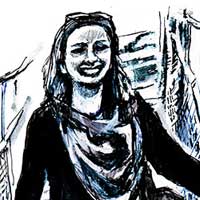Part of the Series
Ladydrawers
 Recent debates over the always enraging but never changing VIDA byline stats (which document the percentage of women’s bylines in major media outlets) have seemingly devolved into hopelessness, with some parties claiming that editors don’t care or they would hire more women creators, editors using the moment to trumpet perhaps marginal accomplishments in bringing in new women’s voices, and women writers still floundering in a field of cultural production that clearly doesn’t value their labor as highly as men’s. Here at Ladydrawers, of course, we feel that byline counts are just the most immediate proof of a deeply flawed system. This system includes differences in how published content is acquired, a pay gap across a range of gender identities, and unique but consistent forms of gender-based and sexual harassment. It is also a reflection of a larger gender bias in media and labor in general.
Recent debates over the always enraging but never changing VIDA byline stats (which document the percentage of women’s bylines in major media outlets) have seemingly devolved into hopelessness, with some parties claiming that editors don’t care or they would hire more women creators, editors using the moment to trumpet perhaps marginal accomplishments in bringing in new women’s voices, and women writers still floundering in a field of cultural production that clearly doesn’t value their labor as highly as men’s. Here at Ladydrawers, of course, we feel that byline counts are just the most immediate proof of a deeply flawed system. This system includes differences in how published content is acquired, a pay gap across a range of gender identities, and unique but consistent forms of gender-based and sexual harassment. It is also a reflection of a larger gender bias in media and labor in general.
This flawed system was built outside the arena of cultural production, of course, which is why the last two strips have focused on a history of women’s struggle for equal political representation and pay, and women’s recent gains in Congress. But a lack of political representation across a spectrum of gender identities has had real impacts on laws and policies upon which our culture is built. Over the next few strips, we’ll explore how intellectual property rights law has had an impact on culture, culling from research done in residency at the Provisions Library in Washington, DC. This one, a collaboration with Ladydrawer’s second male artist Clay Harris, features portraits of cultural producers from the DC area.
